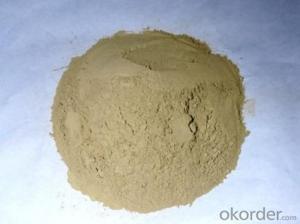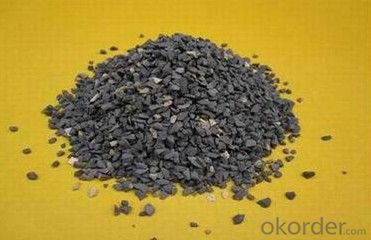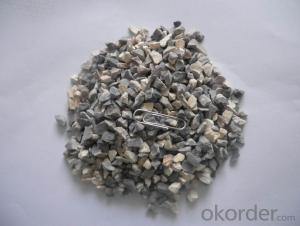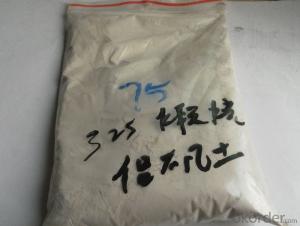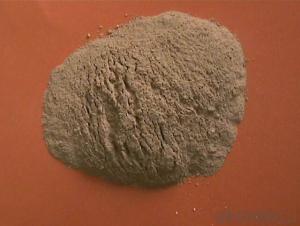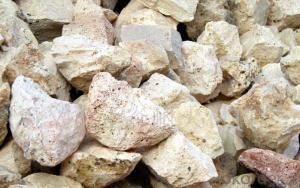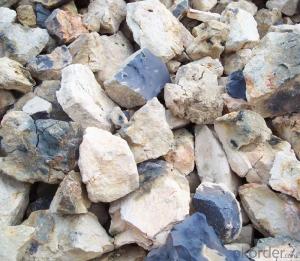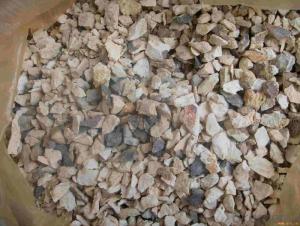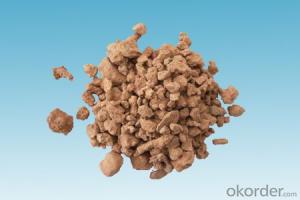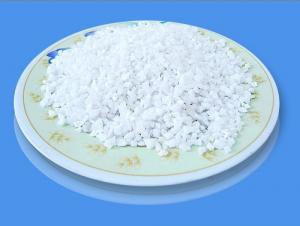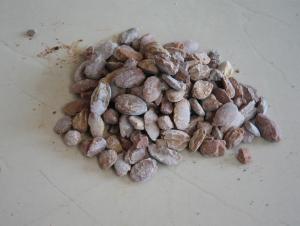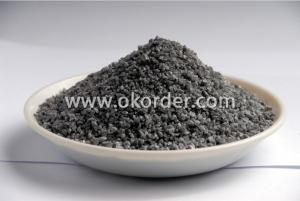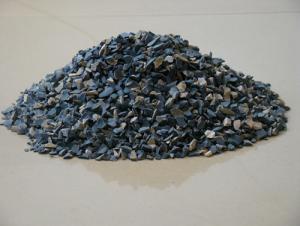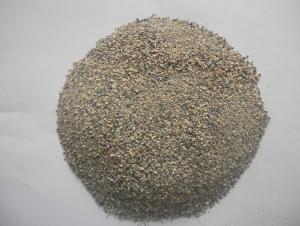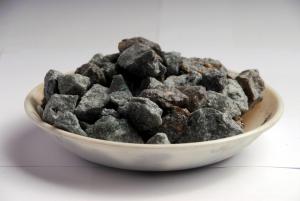High Quality Bauxite for Refractory Raw Materials - Supplied by CNBM
- Loading Port:
- China main port
- Payment Terms:
- TT OR LC
- Min Order Qty:
- 25 m.t.
- Supply Capability:
- 10000 m.t./month
OKorder Service Pledge
OKorder Financial Service
You Might Also Like
Quick Details
| Place of Origin: | Henan, China (Mainland) | Shape: | Powder | Material: | Alumina Block |
| SiO2 Content (%): | <7% | Al2O3 Content (%): | 70-88% | MgO Content (%): | 0.2 |
| CaO Content (%): | 0.3 | Refractoriness (Degree): | Common (1580°< Refractoriness< 1770°) | CrO Content (%): | 0 |
| SiC Content (%): | 0 | Model Number: | CXD-LFT07 | Brand Name: | cnbm |
| Name: | sell bauxite ore | Application: | refractory, abrasive, cement,coating,castable | Al2O3: | 70-88% |
| Fe2O3: | <2% | Particle Size: | 0-1,1-3,3-5, 100mesh, 200mesh, as your requirement | Sample: | free |
| packing: | Jumbo bag | refractoriness: | 1550-1790℃ | delivery time: | based on your quantity |
| price: | lower |
Packaging & Delivery
| Packaging Details: | ton bag, or 25 kg/small bag,then ton bag, as your requirement |
| Delivery Detail: | 2 working days after deposit received |
Hot sell different size bauxite buyer
Product Description
| Description of bauxite buyer |
There are several different models of raw bauxite,we own have three bauxite quarry,and can produce 5000 tons bauxite per month.
| Classification of bauxite buyer |
| 1.Refractory Grade: |
Refractory grade bauxite has high refractoriness, good mechanical strength and moderate slag resistance. Bauxite in the refractory industry is typically used in ladle working lining, tundish furniture, delta sections, general perpose repairment, aluminium melting furnace and mineral processing.
| 3. Rotary calcined bauxite: |
Rotary Kiln Bauxite, as the name suggests, it is the bauxite produced by rotary kiln. there are three kinds of kilns for bauxite production mainly, rotary kiln, shaft kiln and round kiln.
| 4. Shaft kiln calcined bauxite: |
Shaft kiln bauxite, the bauxite calcined by shaft kiln. the raw material-bauxite ore is loaded from the top of kiln together with coal powder and combustion improver,the fire of calcination comes from kiln bottom, about 1300-1400 ℃After the complete calcination, the bauxite is carried out from the bottom.
| Physical and Chemical Indexes of sell bauxite ore |
| Item | SNR90 | SNR88 | SNR87 | SNR85 | SNR80 |
| Al2O3% (min) | 90 min | 88 min | 87 min | 85 min | 80 min |
| SiO2% (max) | 3.5 | 5.5 | 7 | 8 | 10 |
| Fe2O3% (max) | 1.5 | 1.6 | 1.8 | 2 | 2.5 |
| TiO2% (max) | 3.8 | 4 | 4 | 4 | 4 |
| CaO+MgO % (max) | 0.35 | 0.4 | 0.4 | 0.4 | 0.5 |
| K2O+ Na2O % (max) | 0.35 | 0.4 | 0.4 | 0.4 | 0.5 |
| Bulk density(gm/cc) (min) | 3.35 | 3.25 | 3.2 | 3.1 | 2.9 |
| Moisture (max) | 0.3 | 0.3 | 0.3 | 0.4 | 0.5 |
| Item name | SNC-60 | SNC-70 | SNC-80 | SNC-85 | SNC-88 |
| Al2O3 % min | 60-70 | 70-80 | 80 | 85 | 88 |
| Fe2O3 % max | 2 | 2 | 2 | 1.8 | 1.6 |
| TiO2% (max) | - | - | 4.2 | 4 | 4 |
| CaO+MgO % (max) | 0.6 | 0.6 | 0.5 | 0.4 | 0.4 |
| K2O+ Na2O % (max) | - | 0.6 | 0.5 | 0.4 | 0.4 |
| Bulk density(gm/cc) (min) | 2.65 | 2.75 | 2.9 | 3.1 | 3.2 |
| Moisture (max) | 0.5 | 0.5 | 0.5 | 0.5 | 0.5 |
| Item name | RKB-85 | RKB-86 | RKB-87 | RKB-88 | RKB-90 |
| Al2O3 % min | 85 | 86 | 87 | 88 | 90 |
| Fe2O3 % max | 2 | 1.8 | 1.8 | 1.8 | 1.6 |
| TiO2% (max) | 4 | 3.8 | 3.8 | 3.8 | 3.8 |
| CaO+MgO % (max) | 0.3 | 0.25 | 0.25 | 0.25 | 0.25 |
| K2O+ Na2O % (max) | 0.5 | 0.45 | 0.45 | 0.45 | 0.45 |
| Bulk density(gm/cc) (min) | 3.1 | 3.15 | 3.25 | 3.3 | 3.4 |
| Moisture (max) | 0.5 | 0.5 | 0.5 | 0.5 | 0.5 |
| SiO2% (max) | 9 | 8 | 7 | 6 | 4 |
| Item Name | SKB-80 | SKB-83 | SKB-84 | SKB-85 | SKB-86 |
| Al2O3 %( min) | 80 | 83 | 84 | 85 | 86 |
| SiO2% (max) | 13-14 | 11 | 10 | 9 | 8 |
| Fe2O3 % max | 2.5 | 2.2 | 2 | 2 | 2 |
| TiO2% (max) | 4.2 | 4.2 | 4 | 4 | 3.8 |
| CaO+MgO % (max) | 0.8 | 0.7 | 0.6 | 0.5 | 0.4 |
| K2O+ Na2O % (max) | 0.6 | 0.5 | 0.5 | 0.5 | 0.5 |
| Bulk density(gm/cc) (min) | 2.7 | 2.75 | 2.8 | 2.85 | 3 |
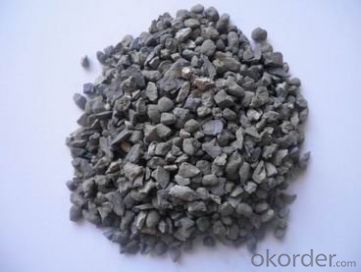
- Q: Who knows what is the external wall thermal insulation materials for level A fireproofing?
- In general, external wall thermal insulation materials can be divided into level A and level B by combustion grading. Level A is non-combustible material, and level B is combustible materials. A few years ago, the fire of the CCTV Building and Shenyang Hotel put the blame on the level B material. At present, the level A material is widely used, and the prices of same level A materials may be even cheaper than the level B material. Level A material is generally divided into thermal?mortar, phenolic foam board, rock wool board and foam cement board. I hope this information can be helpful to you. Hope you adopt.
- Q: What's the requirements of fire-fighting criteria of heat insulating material?
- It shouldn't be under than B2 level. Roofing insulation fire rating requirements: the ministry of public security, housing and urban-rural development department issued about printing and distributing the civil building external thermal insulation system and the interim provisions on the exterior wall decorative fireproof prescribed in the notice: roof grassroots adopted duration of fire resistance is the non-combustible component that shouldn't less than 1.00 h's. Its roof insulation materials should not be below B2; Otherwise, the combustion performance of insulating material should not be below the B1 level. The junction of the roof and wall, the insulation layer around the opening part of roof should use the grade A thermal insulation material to set level fire-fighting belt that width is not less than 500 mm.
- Q: what is the original materials of fireproof coating?
- Fire retardant coating is composed of the base materials (that is film forming substance), pigments, ordinary coating additives, fire retardant agent and dispersion medium. In addition to fire retardant agent, other components functions the same as in ordinary coating, but its performance and thickness are specifically required. Some solvent-based fire retardant coating can burn upon encountering fire before construction.In fact,It is the flammable solvent contained in the coating that is burning while substances such as the base materials and fire retardant agent does not burn. Because solvent-based fireproof coating contains organic solvent and these fire-resistant coating, once leaked from the bucket, are likely to cause a fire. Fireproof coating on the substrate can insulate heat only after the solvent contained evaporates compeletly.
- Q: Is the ball mill used in production of refractories?
- It will be used. It is used in the process of milling the raw material which is less demanding on technology and in relatively large amount. Is there lots of network marketing for refractory industry? Is the competition fierce on the Internet?
- Q: Where is the sizing nozzle for refractories? Just enter the line, master into!
- Hua Heng refractories in the industry reputation is good, especially in the Southern small steel sales are among the best!
- Q: What refractories are used in various parts of the blast furnace.
- Blast furnace from top to bottom has the throat, hearth staves, waist, bosh, hearth and furnace bottom. the specific structure is as follows: The throat is the first to be affected by the impact and abrasion, generally use high-density alumina bricks. the upper and central portion of temperature furnace is only 400 ~ 800 ℃, the area with high alumina bricks and silicate bricks. The lower part of furnace is subject to erosion and dust erosion alkali metal vapor due to high temperatures, it is required in such case to use high quality clay brick,high alumina brick,carborundum brick,corundum brick that is slag resistance and alkali?resistance, temperature resustant and wearproof. Furnace bosh temperature reached 1400 ~ 1600 ℃, serverly eroded by slag,vapor, flush. so we use carborundum brick and reaction-bonded silicon?carbide?brick. Bosh temperature reaching1600 ~ 1650 ℃, using alumina brick, corundum brick or silicon carbide brick. the temperature of Hearth near the upper portion of the outlet zone at 1700 ~ 2000 ℃, use of silicate bricks and corundum castable graphite filler, silicon carbide bricks. In 1450 Silly twitch bottom temperature sealing die of hunger slander bet phoenix astringent preserved Grade ~ 1500 ℃, use of graphite bricks and microporous carbon bricks, now use more corundum brick, corundum mullite brick and synthetic mullite brick. x26lt;P class x3d "share-btn"x26gt;
- Q: What are the differences and connections between softening temperature of the refractory under a fixed load and thermal resistant creep property of the refractory?
- The result of refractoriness under load is temperature while the result of creep is percentage of deformation. Refractoriness under load and creep can be tested by an instrument. Refractoriness under load reflects the temperature in which the deformation reaches a certain degree under the condition of load. Creep reflects the deformation refractory has under the condition of constant temperature and load. Both refractoriness under load and creep are important criterion for the operating temperature of refractory.
- Q: Does refractory belong to stone, building materials or other?
- Refractories belong to organic non-metallic materials, stone and construction materials. After it is used in building. Just for your reference.
- Q: I would like to ask a friend that how much is the fire endurance of level A fireproofing glass?
- Fireproofing doors can be divided into Class A, Class B and Class C by the fire endurance, the fire endurance is seperately not less than 1.20h, 0.90h and 0.60h. Fireproofing glass is a kind of special glass which can retain its integrity and insulation in the prescribed fire test, it can be divided into three categories according to fire resistance rating: class A is the fireproofing glass with refractory integrity and refractory thermal insulation. Such glass has the properties of transmittance, fireproofing (smoke insulation, fire insulation, heat radiation shielding), sound insulation and shock resistance, which is suitable for architectural steel and wood fire doors, windows, partition walls, daylighting?roof, ceiling?screen, perspective floor and other building components required both transparent and fireproofing. Class B is a fireproofing glass with refractory integrity and thermal radiation intensity. Such fireproofing glass is mostly composite fireproofing glass with transmittance, fireproofing and smoke insulation. Class C is a fireproofing glass with refractory integrity. Such glass has the features of transmittance, fireproofing, smoke insulation and high strength. it can used in partition wall, fire window and outdoor curtain wall without the thermal insulation requirements. fireproofing glass can be divided into composite fireproofing galss and monolithic fireproofing glass by the structure.
- Q: What are the materials used in refractory material processing?
- AZS special refractory brick, corundum brick, magnesia chrome brick, silicon carbide, silicon nitride bonded silicon carbide, nitrides, silicides, sulfide, boride, carbide and other non oxide refractory materials; calcium oxide, chromium oxide, alumina, Magnesium Oxide, beryllium and other refractory materials. Often used insulation refractories are diatomite products, asbestos products, insulation panels and so on. Unshaped refractory materials commonly used are fettling, refractory ramming material, refractory castable, refractory plastic material, refractory clay, refractory gunning, refractory cast material, fireproof coating, lightweight castable, mud etc..
Send your message to us
High Quality Bauxite for Refractory Raw Materials - Supplied by CNBM
- Loading Port:
- China main port
- Payment Terms:
- TT OR LC
- Min Order Qty:
- 25 m.t.
- Supply Capability:
- 10000 m.t./month
OKorder Service Pledge
OKorder Financial Service
Similar products
Hot products
Hot Searches
Related keywords
